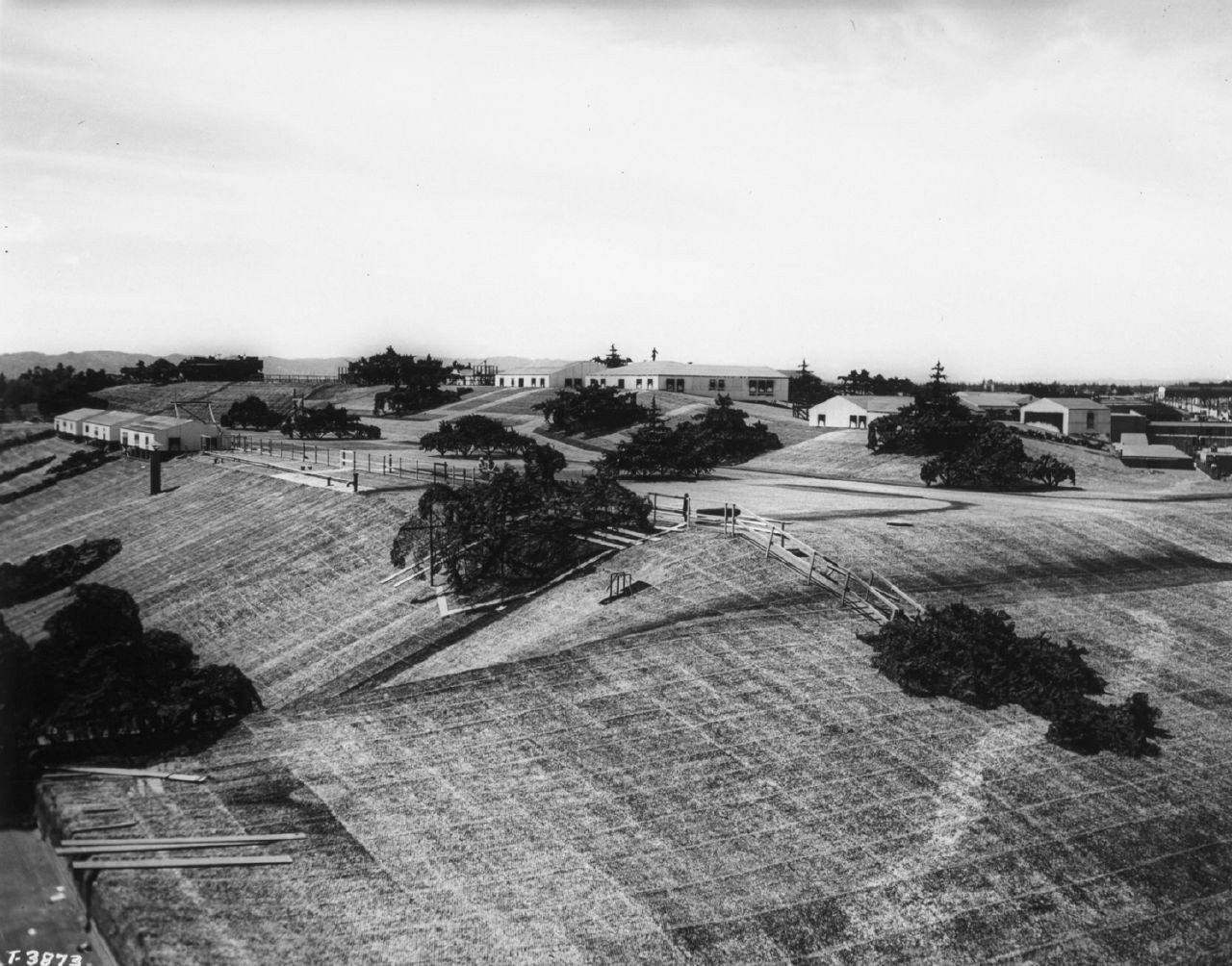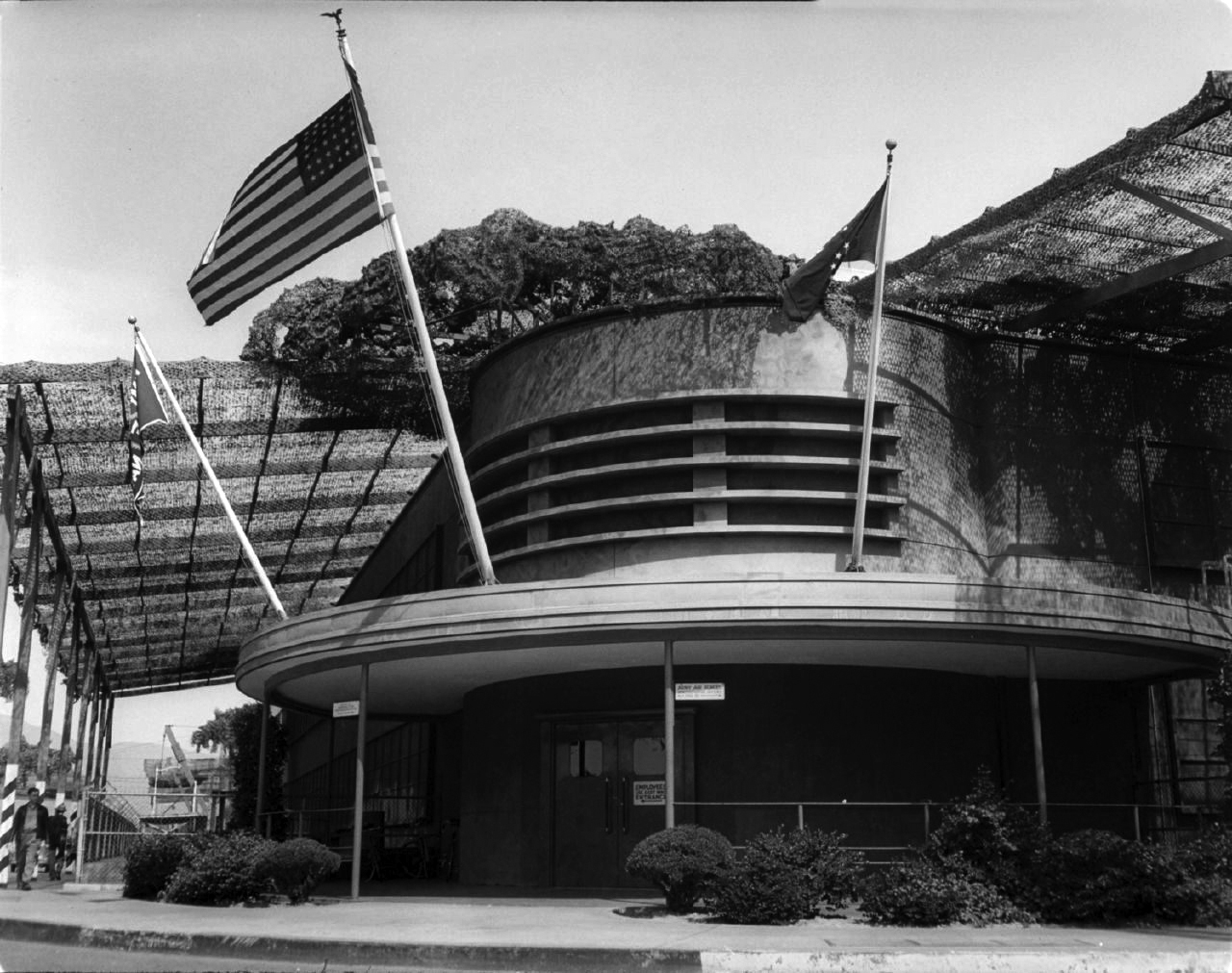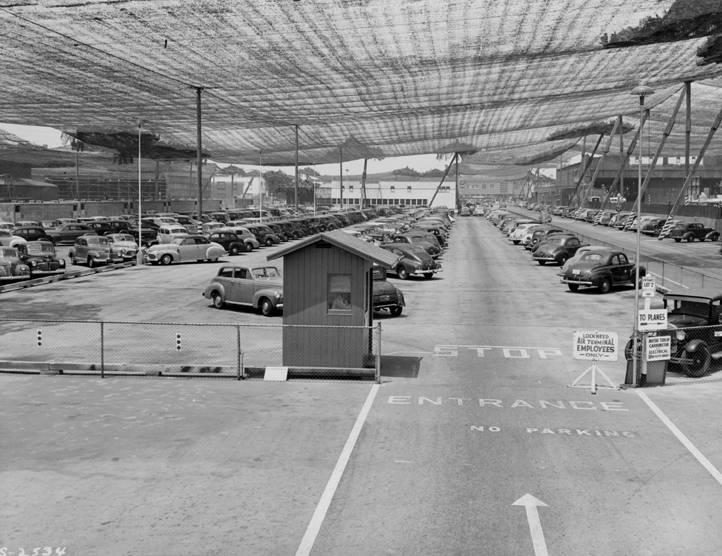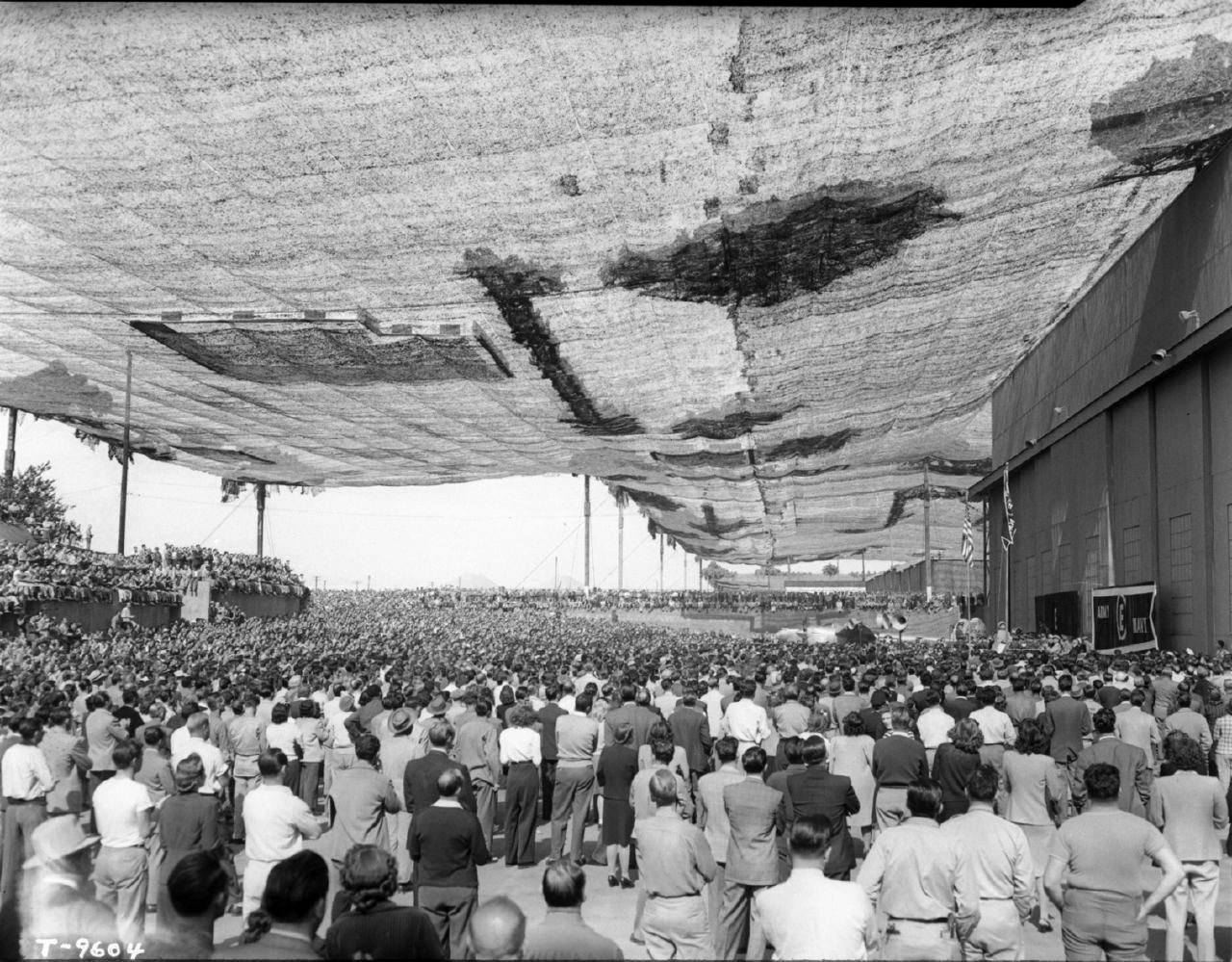From overhead, the Lockheed plant resembled a bucolic California suburb. (California State University, Northridge)
How Hollywood helped create a fake suburb in Burbank
After the Japanese attack on Pearl Harbor in December of 1941, the U.S. government moved frantically to bolster its defenses along the Pacific Coast. Among the more ingenious projects: A giant fake suburb draped atop the Lockheed plant in Burbank.
Initially rejected as harebrained, the idea was to convince potential airborne attackers that the known target had vanished off the map, replaced by neat rows of homes, cars, and farmland.
With help from Hollywood designers, a wood frame was erected around the factory and covered by a massive tarp with burlap homes, painted streets, and trees made from wire and chicken feathers. Airstrips were painted green to resemble fields of alfalfa.

Lockheed Martin
To give the illusion of normal neighborhood activity, rubber cars were periodically moved about and clothing was added and removed from clotheslines. But below the canopy, thousands of Lockheed employees busily churned out P-38 fighters and B-17 bombers for the war effort.
From the ground, the obvious masquerade struck some locals as a bit silly. “It was like a big secret that was not a secret at all,” a former Lockheed worker told the L.A. Daily News in 2008.
But from the sky, it was a masterpiece. At one point, a general on an aerial tour of the area was challenged to spot the factory. He couldn’t see a thing.
Below, a few more old photos of the disguised plant.

Lockheed Martin

California State University, Northridge

Lockheed Martin
This article is from the California Sun, a newsletter that delivers must-read stories to your inbox each morning . Sign up here.
Get your daily dose of the Golden State.